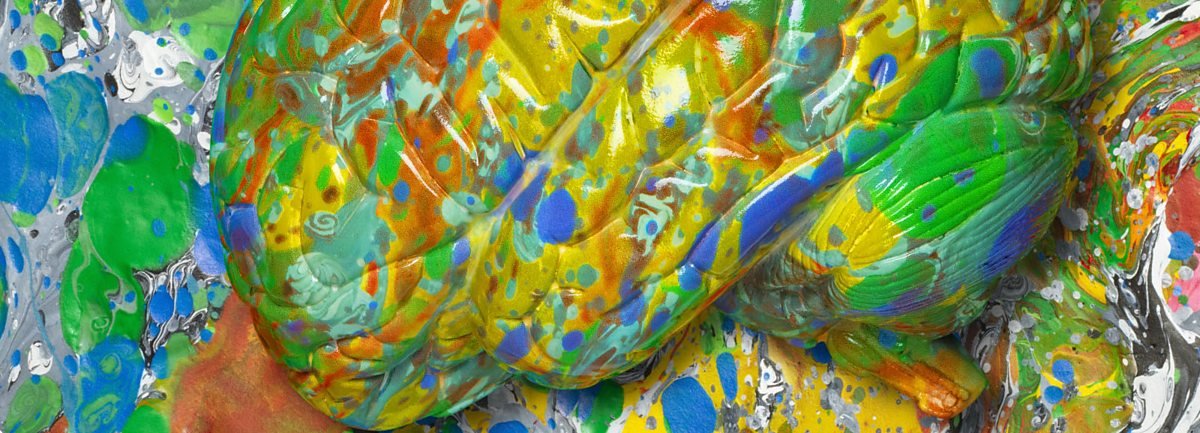
How do we understand abstract art?
Claudia Hammond (CH): “So Luca you’ve been investigating how the brain actually processes art when we look at it. How much do we know about what goes on when we’re looking at a piece of abstract art compared with something much more traditional and representative?”
Luca Ticini (LT): “When we observe a representational painting our eyes would stop on salient features like the dog, the house, the man. While when we observe an abstract painting we perceive it more uniformly so the eyes will scatter around, will scan the painting without stopping in a particular place. This is also reflected in the activity of the brain. When we observe a representational painting, there are specific areas in the brain, well localised, that are activated and are specialised for processing let’s say houses, faces and dogs etc. While when we observe abstract painting we don’t have this kind of activity. The activity in the brain is widespread and so we cannot really locate it.”
CH: “So we know that some people really like abstract art and some people don’t, do we know what’s going on in the brain if people do like it?”
LT: “Yes, if we observe this model of the brain, so when we like a piece of art there is an increase of activation in our brain in specific areas, particularly in the orbital frontal cortex, which is located in between the eyes, in the prefrontal cortex and in the posterior parietal cortex. And we can even enhance or reduce the activity in these areas and therefore enhance or reduce the appreciation of art. For instance, if we stimulate by applying small magnetic pulses, these areas of the brain for instance the prefrontal cortex, what happens is that we will decrease the likability of the paintings whether they are abstracts or representational. Instead if we pulse the parietal cortex, we will decrease selectively the likability of paintings which are representational because this area is more involved in the recognition of objects.”
CH: “That seems absolutely amazing that you can use this to actually change whether someone likes the picture they’re standing in front of or not.”
LT: “Yes absolutely and if you apply small currents in the prefrontal cortex you can even increase the appreciation of art.”
CH: “So this is what galleries need? The need to have one of these.”
LT: (laughs) “Absolutely.”











